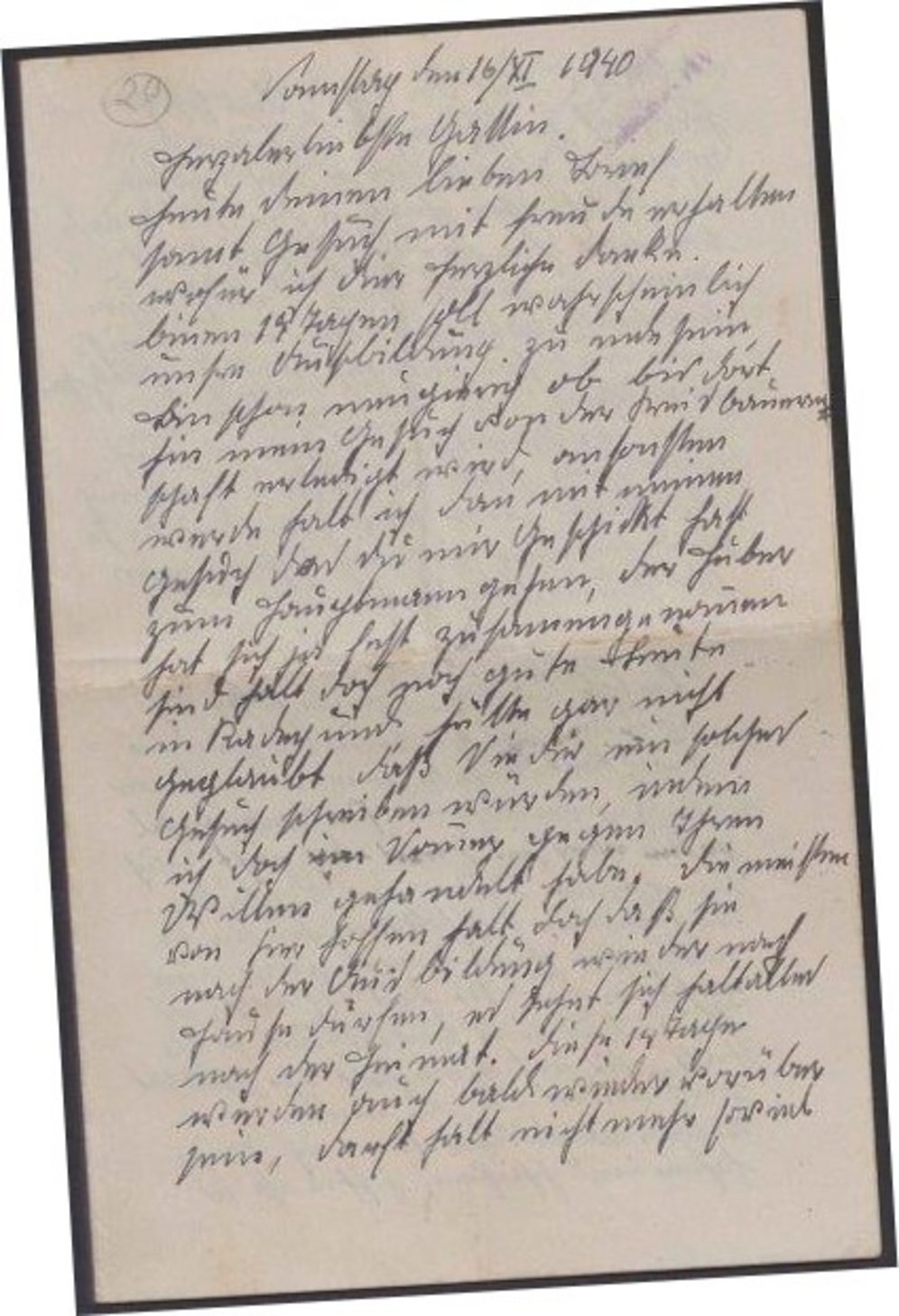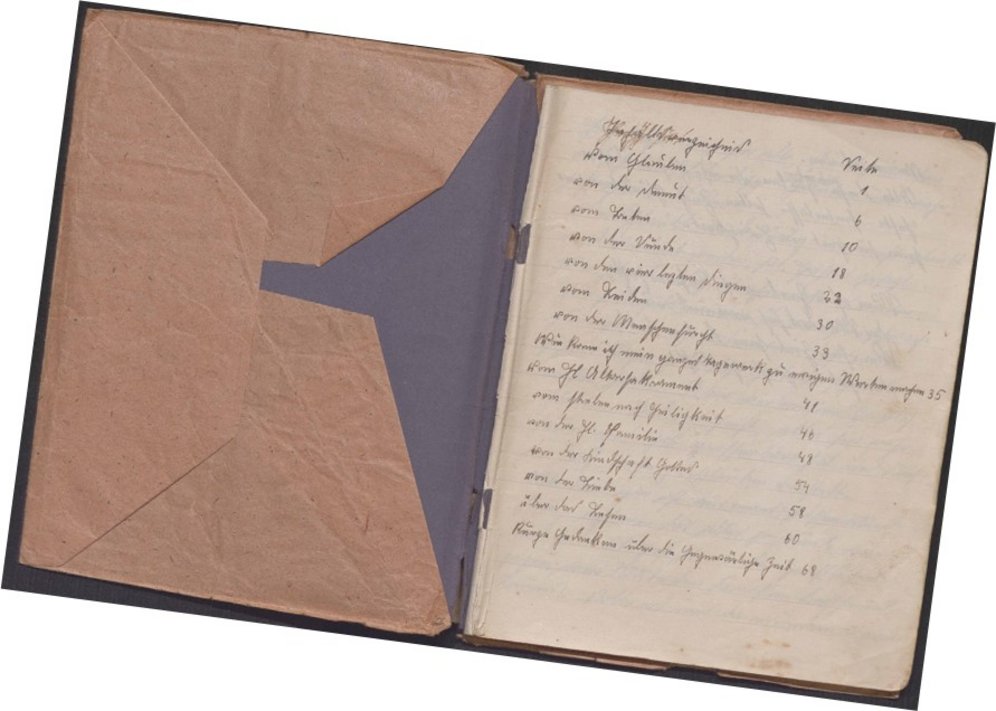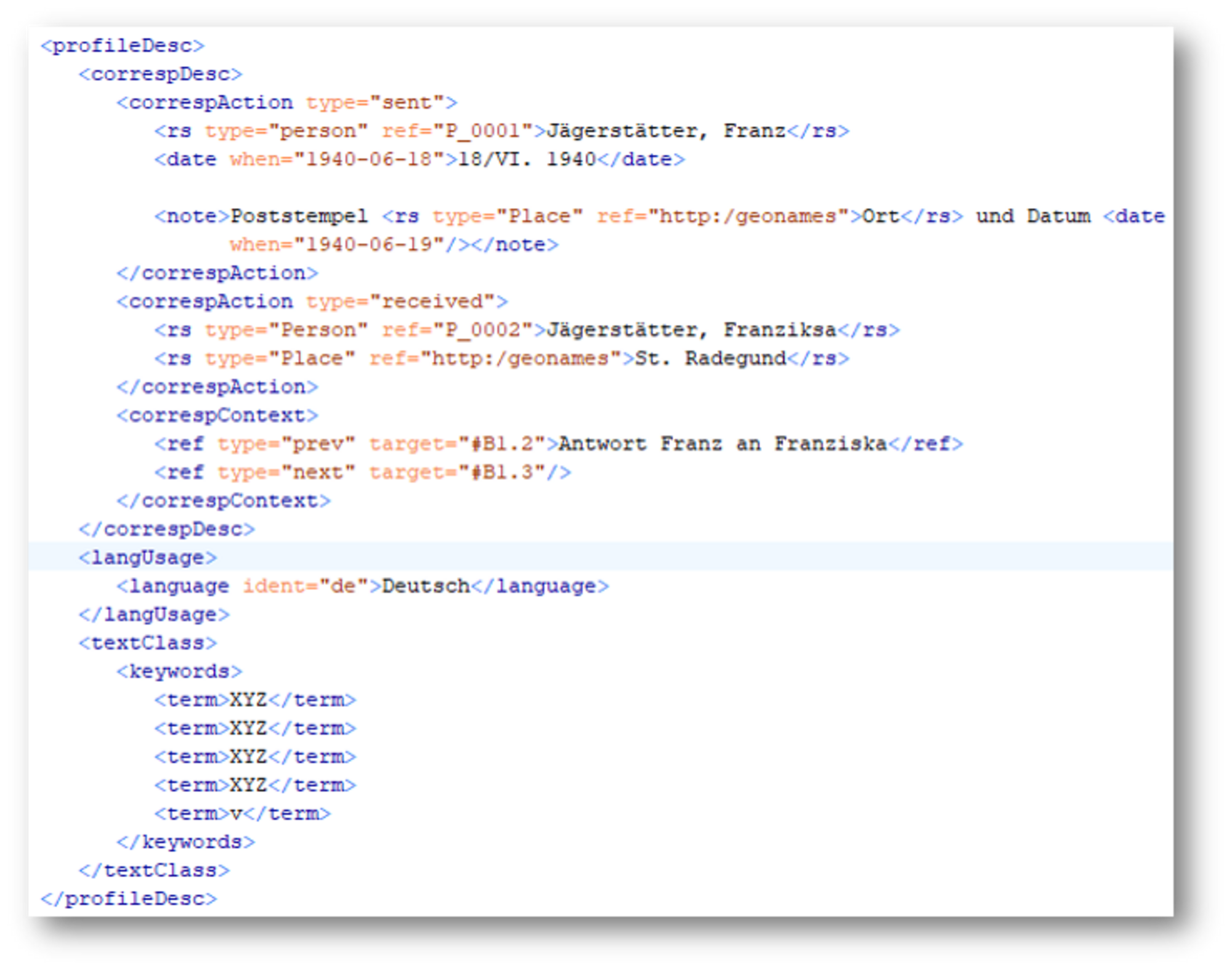

"Jägerstätter digital" - Project for the compilation of a digital edition
Project description
A long-term project of the Franz and Franziska Jägerstätter Institute is the compilation of a historical-critical edition of the entire Jägerstätter holdings, which have been in the possession of the Diocese of Linz since June 2018 and are kept in the Diocesan Archives as the "Sammlung Haus Jägerstätter" ("Haus Jägerstätter Collection"). The holdings comprise 94 letters written by Franz Jägerstätter, 181 letters addressed to him and 101 letters from third parties to third parties, as well as various documents relevant to the life of Franz Jägerstätter, including four notebooks with notes and thoughts, records from the Wehrmacht remand prison Berlin-Tegel as well as notes on loose sheets and a notebook. This collection is to be edited within the framework of the project "Jägerstätter digital". The focus of the project is initially on the creation of a digital edition, with the aim of setting new standards and possibilities within Jägerstätter research, making the collection of letters accessible to a wider public, promoting interdisciplinary approaches to research and developing new research questions.
The special feature of this edition project is the combination of two work steps, which are generally carried out separately: the compilation of a digital edition with in-depth archival cataloguing of the letters and life documents. Over the next few years, the metadata we have recorded in XML will be imported into the archive information system of the Diocesan Archive Linz, where the holdings will be stored and accessible after scientific processing by the FFJI. With the project "Jägerstätter digital" the sources will be permanently saved for posterity and thus meet the requirements of long-term archiving. We will ensure this by the representation of the data in XML, the different forms of presentation (digital and print version) as well as the digitalization of the holdings.
The starting point of the edition is the digitized source inventory, which is supplemented by a diplomatic transcription, a reading version of the letters and life documents as well as the indexing of metadata on the individual ego sources. In accordance with editorial standards, we provide the reading version with a historical-critical annotation apparatus and create directories of persons, places and biblical passages. The diplomatic transcription is the literal transcription of letters and life documents. Due to transcriptions already made in the course of the beatification process by Dr. Monika Würthinger, then director of the Diocesan Archive Linz, we are able to include them in the digital edition as well.
The added value of the "Jägerstätter digital" project is that the data can be processed at any time, compiled as desired and presented in any form - digital or as spin-offs in form of printed editions or e-books. In addition, the digital edition can be expanded or supplemented at any time, for example with the holdings of Franziska Jägerstätter, and the texts can also be enriched with further information. Also, search and filter functions simplify reading and using the edition.

Project goals
- Development of a reading version with historical-critical annotation apparatus, index of persons, places and biblical passages
- Creation of a diplomatic transcription based on existing transcriptions in Word format
- In-depth archival exploration of the source material
- Presentation of the data digitally and as print-spin off
- Ensuring long-term archiving
Standards of the digital edition
The work on the digital edition is rooted in the research area of Digital Humanities. In addition to digitizing the holdings in the form of high-resolution scans (400dpi), the central task is to create so-called "born digital sources". The aim is to represent the text in data. To achieve this, the sources must be translated into a language that is readable by both humans and computers. This means that the contents of letters and life documents are translated into XML (extensible markup language), a standard for document markup introduced by the World Wide Web Consortium (W3C ). The TEI (Text Encoding Initiative) document format, which is based on XML and has become the standard in Digital Humanities, is used for encoding and exchanging text data. https://www.tei-c.org/release/doc/tei-p5-doc/de/html/index.html
The challenge of this edition project is to combine the in-depth archival exploration with the indexing of historical documents. In the field of archiving, we follow the standards for resource indexing with normative data in archives and libraries (RNAB) for personal, family, and corporate archives and collections. The following core elements are collected for each letter: signature, title, sender and recipient, time, place, volume, form, language, content, history/provenance, physical description of the document, categorization (correspondence or life documents).
In addition, the sources are enriched with a historical-critical annotation apparatus in accordance with editorial standards and indexes of persons, places and biblical passages are created. In this work we are oriented towards open access applications and we also make the source codes of our work available to other researchers.

Project phases:
Conception - Implementation - Publication - Long-term archiving
The project consists of four different phases, which are always intertwined, but nevertheless represent separate work steps.
Conception (October 2018 to February 2019)
In the conception phase, the main goals and requirements of the digital edition were defined. Since there are no guidelines or standards in the field of digital editions so far, we oriented ourselves on so-called best-practice examples, exchanged ideas with other project initiators and networked with various institutions and research facilities. After determining the financial, personnel and content possibilities, a concept paper was developed.
Implementation (February 2019 to date)
In the second, current phase, the concrete implementation of the digital edition project has begun. The first step was to define the technical requirements for working on the digital edition (XML editor Oxygen https://www.oxygenxml.com/), to become familiar with the standards of edition technology and coding according to TEI and to create a TEI template for coding the letters and life documents. After that the data modelling was started and the letters were coded.
Presentation & long-term archiving (2020)
Together with the coding of the texts, the third and fourth phases, the presentation and long-term archiving of the data, must already be considered. For this purpose, we have analyzed different online edition projects and created a catalogue in which form our data should be presented. In addition, initial discussions have been held with research institutions on long-term archiving and the process has been initiated under the direction of the KU-Linz library.
Text: Verena Lorber
